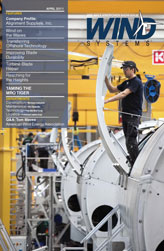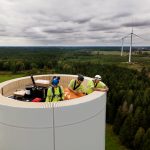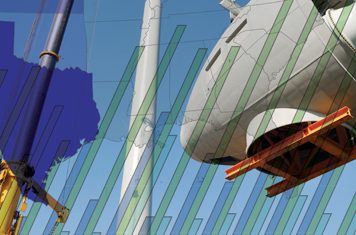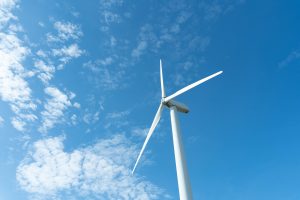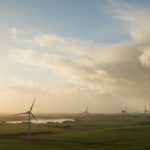There is nothing more important to your business than the people who work for you. All aspects of your operation depend on their efforts and ability to effectively support your presence in the wind industry. Whether you are an owner, developer, or fellow contractor in the wind power sector, emergency preparedness and ensuring worker safety should be a significant part of your planning process at all stages of construction. While preventing the need for an emergency response is the primary goal, you must be prepared for situations that are out of your control, such as severe weather conditions.
Constructing wind power projects requires a professional workforce to spend long hours building a quality job effectively and safely. During the relatively short construction interval—which can last from six months to a year, depending on the size and scope of the project—the wind turbines are touched more than at any other time throughout the life of the project. This activity generates the highest potential for emergency situations, given the amount of risk exposure during this time. In order to appropriately manage the degree of risk you must be prepared to deal with any emergency at any time and be self-sufficient on remote project locations until help can arrive. This self-sufficiency takes upfront planning to ensure proper response, while minimizing response time and ultimately maintaining project efficiency. The key steps to emergency preparedness for wind power construction begin with defining your plan and process as follows:
Step 1: Write a plan. A key building block to managing risk is having a written plan defining your response during an emergency. It should include both how to and who will respond, the communication process, and defined responsibilities, as well as ensuring upper management has appropriate knowledge of an incident. The plan must be clear and easily executable, and it should not only address communication to those in the field who are responding directly, but also the communication link back to the central job office or trailer. The workers located there are often crucial to a successful response, although they may be located a fair distance from the location of the incident or accident.
Step 2: Make a reference checklist. A simple process to ensure successful communication to first responders and other necessary parties is the creation of a “reference checklist,” which is a clear, simple document that describes appropriate responses for the various types of emergencies that could happen on a project site. Possible situations include medical response, severe weather, bomb threats, explosions, fire, and hazardous material or environmental release. Keep in mind that in order for the checklist to be useful it must be updated throughout the life of the wind project and considered a living document by the entire workforce.
Step 3: Establish a designated team. To ensure that you can promptly take care of those in need during unforeseen situations, you must establish an emergency response team. Having a designated team that can respond and initiate help is especially critical in remote locations. An easy way to reduce response time is to have dedicated traffic control personnel who can coordinate traffic flow and direct emergency services. When dealing with a medical emergency it is crucial to reduce response time and avoid congestion with construction equipment and the general public.
The next point to consider involves communicating the plan. Once it is written it must be effectively communicated to all those affected. Not only should the onsite construction team understand the plan, it is equally important for any offsite emergency service staff to understand what might be asked of them. Emergency services are managed differently in different places, so it is important to understand what local emergency services will support. Some emergency services personnel may plan to meet onsite responders at the front gates of the wind project, or at a predetermined median location.
Understanding local emergency limitations is critical, with special consideration for the time of the year the construction is taking place. Many remote townships close to wind power projects rely on volunteer emergency services. These local volunteers are exceptionally helpful people, but they also have other full-time jobs. In farming communities many local volunteers may be planting or harvesting crops in the spring and fall, so your plan must address these types of seasonal fluctuations and known changes throughout the life of the project.
We will continue our discussion of communication in next month’s installment, as well as the importance of workforce safety training and preparing for tower rescues.
















